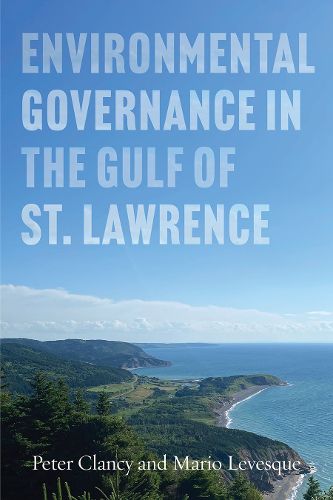Readings Newsletter
Become a Readings Member to make your shopping experience even easier.
Sign in or sign up for free!
You’re not far away from qualifying for FREE standard shipping within Australia
You’ve qualified for FREE standard shipping within Australia
The cart is loading…






The Gulf of St. Lawrence is one of Canada's largest and most complex marine systems, bordering on five provinces with 250,000 people living in proximity to the coast. Managing the aquatic environment of this vast territory must consider not only biophysical processes but also human use, policy jurisdiction, and politics.
Environmental Governance in the Gulf of St. Lawrence focuses on the coastal margin and deepwater Gulf in a series of policy studies, covering topics such as marine infrastructure, fisheries, offshore petroleum, coastal zones, marine transport, aquaculture, large ocean management, protected areas, and Indigenous governance. The authors examine each semi-autonomous field of environmental action within a geopolitical context, and then compare them as parts of a policy whole, with the goal of understanding the management of this vital region.
This yields a picture of polycentric politics, where environmental policy subnetworks interact. Building on this, Environmental Governance poses questions about possible reform agendas.
$9.00 standard shipping within Australia
FREE standard shipping within Australia for orders over $100.00
Express & International shipping calculated at checkout
The Gulf of St. Lawrence is one of Canada's largest and most complex marine systems, bordering on five provinces with 250,000 people living in proximity to the coast. Managing the aquatic environment of this vast territory must consider not only biophysical processes but also human use, policy jurisdiction, and politics.
Environmental Governance in the Gulf of St. Lawrence focuses on the coastal margin and deepwater Gulf in a series of policy studies, covering topics such as marine infrastructure, fisheries, offshore petroleum, coastal zones, marine transport, aquaculture, large ocean management, protected areas, and Indigenous governance. The authors examine each semi-autonomous field of environmental action within a geopolitical context, and then compare them as parts of a policy whole, with the goal of understanding the management of this vital region.
This yields a picture of polycentric politics, where environmental policy subnetworks interact. Building on this, Environmental Governance poses questions about possible reform agendas.